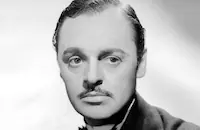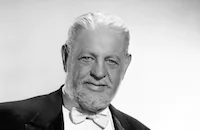There's Always a Woman

Brief Synopsis
Cast & Crew
Alexander Hall
Joan Blondell
Melvyn Douglas
Mary Astor
Frances Drake
Jerome Cowan
Film Details
Technical Specs

Synopsis
After closing his New York City private detective agency due to a lack of business, William H. Reardon goes back to work for the district attorney's office. The office does not stay closed for long, however, as Bill's vivacious wife Sally has decided to reopen the debt-ridden agency and run it herself. The agency is soon headed for success when rich socialite Lola Fraser commissions Sally to follow her husband Walter, whom she suspects of having an affair with Anne Calhoun, his former sweetheart. Later, Sally persuades Bill to take her to the expensive Skyline Club, where, unknown to Bill, she spies on Lola, Walter and Anne, and makes a spectacle of herself in the process. Sally's interest is piqued when she sees Walter pass a note to Anne, who then gives it to the nightclub's owner, Nick Shane. Sally then witnesses Jerry Marlowe, Anne's fiancé, become jealous of Walter and threaten to kill him. The following day, newspaper headlines report that Walter has been murdered. Because Sally has provided the police with a tip that Jerry may be the killer, Jerry's attorney, Mr. Ketterling, hires her to prove his client's innocence. Sally eavesdrops as Bill, who has also taken up the investigation, questions the suspects in the Fraser home. She later discovers Anne in Lola's apartment trying to steal an incriminating letter that she had written to Walter. On another occasion, Sally goes to Lola's apartment, where Shane, who has just demanded $50,000 from Lola, hides. When Sally returns home, she finds Shane's body and smells the fragrance of Lola's perfume. The clues eventually lead Sally and Bill to the conclusion that Lola is the killer, and they trick her into confessing to her husband's murder. It is then learned that she killed her husband because she learned from his attorney that he was planning to divorce her. Realizing that she would be wealthier as a widow, Lola hired Shane to kill Walter, but when Shane tried to blackmail her, she killed him. With the case solved, Bill and Sally rush back into each other's arms.

Director

Alexander Hall
Cast

Joan Blondell

Melvyn Douglas

Mary Astor

Frances Drake

Jerome Cowan

Robert Paige

Thurston Hall

Pierre Watkin

Walter Kingsford
Lester Matthews
Tom Dugan
Gene Morgan

Rita Hayworth
Crew
Lionel Banks
George Cooper
Henry Freulich
Stephen Goosson
Kalloch
Viola Lawrence
Gladys Lehman
William Mull
William Perlberg
Philip Rapp
Morrie Ryskind
Joel Sayre
Morris Stoloff

Photo Collections
Film Details
Technical Specs

Articles
There's Always a Woman
When William Reardon's (Melvyn Douglas) detective agency goes under, he returns to work at the District Attorney's Office. Unbeknownst to him, his wife, Sally (Joan Blondell) decides to play detective and takes on the case of Lola Fraser (Mary Astor). Lola thinks her husband, Walter, (Lester Matthews) is cheating on her with Anne Calhoun (Frances Drake) but an investigation into infidelity becomes a murder case when Walter turns up dead. Although it was reminiscent of The Thin Man series, starring William Powell and Myrna Loy as a husband-and-wife sleuthing team, the dynamic between Melvyn Douglas and Joan Blondell had an edgier side, perhaps reflecting Columbia's grittier approach to filmmaking than the Thin Man's MGM.
The film went into production in the later winter of 1938, and included in the cast were Jerome Cowan, Tom Dugan, and Wyn Cahoon, whose addition was reported in the press on February 1st. She had been playing on Broadway in George Abbott's Brother Rat when she was spotted by talent scouts and put under contract to Columbia, where she only appeared in a handful of films, including The Awful Truth (1937). There's Always a Woman would be her last screen appearance. Old reliable character actors Thurston Hall, Arthur Loft and John Gallaudet were announced February 18th and casting of Eddie Dunn, Nell Craig and Joe De Stefani completed the roster on March 29th. Unannounced but in a "blink-or-you'll-miss-her" role was Rita Hayworth, playing a secretary.
According to press reports, Joan Blondell was happy to be at Columbia, not the least of which because they allowed her to wear her hair in the latest style: piled up on top of her head with ringlets, which was a fashion trend in 1938. Inexplicably, Warner Bros. wouldn't allow her to wear the style, which was very becoming to her. Director Alexander Hall helped to call attention to Blondell during the nightclub sequences, whose set was decorated in white and shades of gray. To make sure his star stood out from the other patrons, he placed women extras around her who were either brunettes or redheads, so that the blond Blondell would attract all eyes.
The set was a family affair for Blondell, with ex-sister-in-law, Connie (who had recently divorced Blondell's brother) playing a bit role and her sister Gloria Blondell as a frequent visitor. On one such visit, director Frank Capra, who was also on the set, saw Gloria and stopped her as she was leaving. Impressed by her beauty, which was similar to her sister's, Capra asked if she'd like to take a screen test. The test was a success and Gloria Blondell was put under contract to Columbia. There was also another family member on the set during production, but she was not visible, thanks to the skill of costumer Robert Kalloch: Joan Blondell was pregnant with her daughter, Ellen Powell, who would be born in June and later became an Emmy-nominated hair and make-up stylist on films like Master and Commander: The Far Side of the World (2003) and television shows like Deadwood. Ellen's arrival also mean that her mother would be unavailable to star with Melvyn Douglas in the sequel, There's That Woman Again (1939). Virginia Bruce would fill in for Blondell, but it was the end of what might have been a successful series.
On its April 20th release, The Tuscaloosa News called There's Always a Woman "an usually clever plot of comedy and drama, skillfully interwoven, to register definite class without the seriousness of the suspenseful murder mystery theme. Both elements are in complete balance and the result is a sparkling and fast-moving entertainment." The Prescott Evening Courier reported that the "laughs, cheers and bravos that have greeted its exhibition" were so loud in a local theater, the film "might have been subtitled "Thunder Over America." The success of There's Always a Woman led to Joan Blondell being put under contract to Columbia a year later, in March 1939.
By Lorraine LoBianco
SOURCES: Goble, Alan. the Complete Index to literary Sources in Film Harrison, Paul. "Ice Cream Cone Ruins Film Scene" The Pittsburgh Press 1 Feb 38 The Internet Movie Database "Theater Gossip" The Evening Independent . 1 Feb 38 "Theater Gossip" The Evening Independent . 18 Feb 38 "Theater Gossip" The Evening Independent . 29 Mar 38 "Film Star's Sister Awarded Contract" The Pittsburgh Press 23 Mar 38 "Melvyn Douglas, Joan Blondell Co-Starred in Comedy at Bama" The Tuscaloosa News 29 May 38

There's Always a Woman
Quotes
Trivia
Notes
Hollywood Reporter production charts lists actors Wyn Cahoon, Arthur Loft, John Gallaudet and William Burress in the film, but their appearance in the relased picture has not been confirmed. According to modern sources, this film was to be the first in the "Bill and Sally Reardon-Private Detectives" series. The series did not materialize, however, and only one other film about the sleuthing Reardons, There's That Woman Again (see below), was completed. Modern sources also note that the film was originally shot with Rita Hayworth in an important role, but when the studio decided to make a series out of the film, it cut her screen appearance down to half a minute to avoid having to commit another major character to the series.















